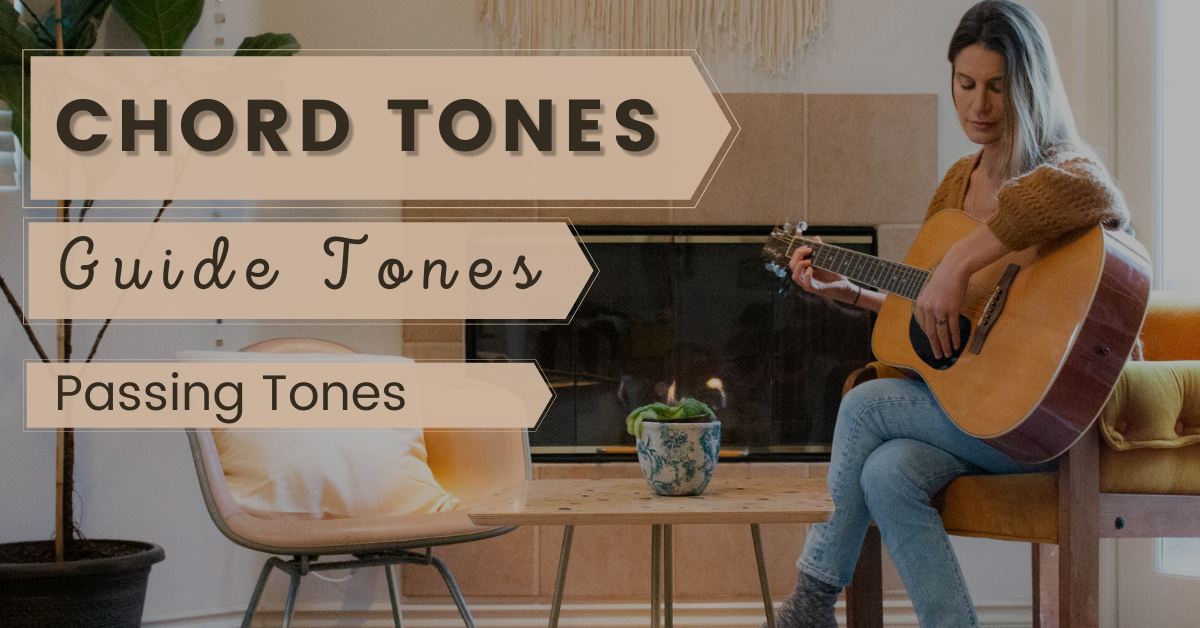Chord Tones, Guide Tones, Passing Tones

Chord tones, guide tones, passing tones... so many TONES! What are they? How do I make sense of all of them? Is it really going to help me better understand music? Although the names can start to blend together and get confusing, chord tones, guide tones, and passing tones are a big part of music theory. And YES, having an understanding of these musical elements CAN help you improve your overall musicianship. In this article, we'll simplify all the confusion.
Chord Tones, Guide Tones, Passing Tones
Let's start with chord tones because many of us already have a basic understanding of what they are. Chord tones are quite simply the individual notes (i.e., "tones") that make up a chord. When we talk about chord tones we are talking about the fundamental notes that are used to build a chord. The fundamental notes of a triad are the root, 3rd, and 5th. The fundamental notes of a 7th chord are the root, 3rd, 5th, and 7th. Tones such as 9ths, 11ths, and 13ths are referred to as upper extensions and are not considered fundamental chord tones (although they are tones that can be used within the chord).
So the chord tones of a C major triad are C, E, and G. The chord tones of a C# minor 7th chord are C#, E, G#, and B.
Now let's turn to guide tones. Guide tones refer to the 3rd and 7th of a chord, if the chord is a 7th chord. If the chord is a triad, then the 3rd is the only guide tone. But what is a guide tone? Why do we care about the 3rd and 7th?
Let's focus on 7th chords. Guide tones tell us a chord's quality, meaning whether the chord is major, minor, or dominant. Let's look at an example.
Consider a C major 7th, C minor 7th, and C dominant 7th chord:
We can't learn much about the chords by looking at the roots or 5ths. In each of the three different chords above the root and 5th are the same. However, the 3rd and 7th are unique to each chord. In a C major 7th chord the guide tones are 'E' and 'B'; in C minor 7th they are 'Eb' and 'Bb'; in C dominant 7th they are 'E' and 'Bb.' These guide tones are what make the chord major, minor, or dominant, and we could identify the chord quality simply by looking at those notes.
Passing tones are notes that are used to help us get from point 'A' to point 'B,' musically speaking. Passing tones might be used to help us move the melody in some way. Often times, passing tones are notes that come from the particular chord scale or harmony that is being used. Sometimes, passing tones can be chromatic tones - notes that come from outside the given key. In the example below from Mozart's Sonata in C major, the harmony is clearly played in the left hand. The right hand melody is playing fast-moving scales, up and down. Some of the notes of the scale are chord tones. Other notes are passing tones - notes that come from the scale but are not chord tones (highlighted by arrows).


